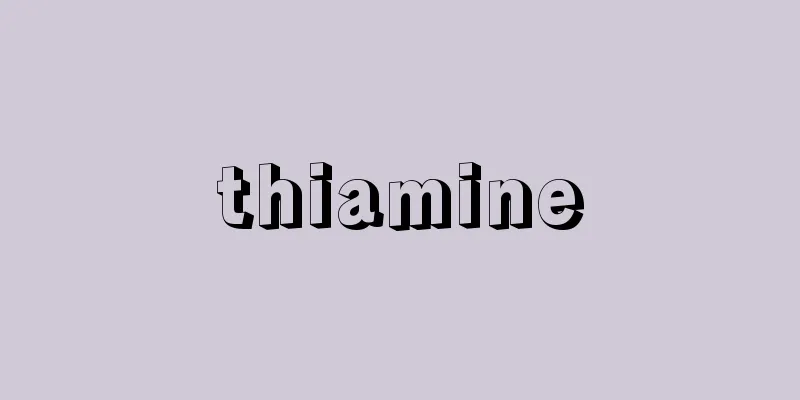Antelope - antelope (English spelling)

|
It is a general term for all animals in the Bovidae family of the Mammalia order, excluding cattle, antelopes, goats, and sheep, but it is not a single group in terms of its lineage. It is also called antelope, or confused with antelope (because it can also be written as antelope). A few species, such as the nilgai and four-horned antelope, live in India and central Asia, but most live in the grasslands, deserts, and sometimes forests of Africa. Almost all of them are herbivores, and most of them forage for food in the early morning and at dusk. They vary in size, from the largest, the giant eland (shoulder height 175 cm, weight 450-900 kg), to the smallest, the royal antelope (shoulder height 25-30 cm, weight 3.5 kg). Their bodies are adapted for running, with slender trunks and legs, long necks, and heads held high. Their hooves are small, their body hair is short, and they are beautifully colored. Some have horns on both sexes, and some only on males, and their shapes vary from corkscrew-shaped, harp-shaped, spear-shaped, spike-shaped, and even sabre-shaped like the sable antelope. Many have holes (parotid glands) under their eyes that secrete a smelly fluid, but some, like the bushbuck, do not, and the number of nipples also varies. There are over 100 species, which are divided into the following groups: (1) Bushbuck Subfamily: Medium to large in size, with spiral horns only found in males. A clear ridge-like line runs from the front base of the horn to the tip, twisting along the horn. They are found in Africa and India, but rarely live in deserts or treeless grasslands. (2) Hartebeestinae: Large, with harp-shaped horns in both sexes, no distinct crest. Common in the open grasslands of Africa. (3) Oryxinae: Large, with long spear-shaped, corkscrew-shaped, or saber-shaped horns on both sexes. They live in the deserts and open forests of Africa and Arabia. (4) Reedbuck Subfamily: Medium to large in size, females have no horns and have bamboo-like circular protuberances. They prefer grasslands near water in Africa. (5) Impala subfamily: Medium-sized, females have no horns, and are broad and lyre-shaped when viewed from the front. They live in the bright forests of Africa. (6) Gazelle: Medium-sized, females have no horns, or if they do, they are small. When viewed from the side, they have a gentle S-shape. They live in open areas such as grasslands in Africa and Asia. (7) Duiker subfamily: Small, with horns, usually shared by both sexes, which are small, spike-like, and shorter than the ears. They live in the forests of Africa. (8) Royal Antelope: Small, with short horns, usually only found in males. Inhabits forests, grasslands, and rocky areas of Africa. [Tadaaki Imaizumi] © Hidehiko Tamagawa "> Main species of antelope (1) (specimen illustration) © Hidehiko Tamagawa "> Main species of antelope (2) (specimen illustration) It is found in the open plains and sparse shrubland of eastern and southern Africa. Its body color is yellowish brown or reddish brown, with white horizontal stripes on its body. Its horns twist twice, and the female's horns are smaller than those of the male. It is also known as the eland or giant antelope. Its head and body length is 250-340cm, its shoulder height is about 170cm, and its weight is 590-680kg. ©Shogakukan "> Eland Distributed from eastern to southern Africa. Often found in shallow waterside forests and scrub forests. Only males have horns, which are 50-75cm long. The back of the body is reddish brown, the lower sides are pale ochre, and the belly is white. Head and body length is 110-150cm, shoulder height is 85-100cm, and weight is 60-75kg. ©Shogakukan "> Impala It is found in eastern and southern Africa, and is often found in grasslands near water. Its body color is marbled gray-brown or black-brown, and males have horns that are 80-90 cm long. Its head and body length is 180-235 cm, its shoulder height is 110-130 cm, and its weight is 160-270 kg . Waterbuck Hartebeests are found in Kenya and Tanzania. Horns are separate for both sexes and are 25-38cm long. Shoulder height is 120-150cm, weight is 160-180kg. ©Shogakukan "> Congolese Hartebeest Distributed in central Africa. Lives in reeds and papyrus thickets near water, and in forests with many lakes and marshes. Body color is brown or gray-brown, and males have horns. Shoulder height 100-115cm, weight 90-125kg ©Shogakukan "> Sitatunga Distributed from Senegal to Sudan. The horns of both sexes are 100-127cm long and grow backwards in a curved shape. The body color is yellowish white. Head and body length is about 190cm, shoulder height is 110-125cm, and weight is 180-200kg. ©Shogakukan "> Scimitar oryx Distributed in southeastern Africa. They live in different habitats, such as hilly forests, low coniferous-deciduous mixed forests, and deep grasslands. Both males and females have horns, which can reach a length of 173 cm in males. Head and body length is about 200 cm, shoulder height is 130-138 cm, and weight is 200-250 kg. ©Shogakukan "> Sable Antelope They live in the grasslands of East Africa. Their horns are 7-43cm long, with females having smaller horns than males. They can form large herds of several thousand when migrating. Their head and body length is 80-110cm, shoulder height is 55-70cm, and they weigh 16-25kg. ©Shogakukan "> Thomson's Gazelle Distributed from eastern to southern Africa. Lives in the open savanna, and migrates in large herds of tens of thousands of animals during the dry season. Both sexes have horns, and their bodies are gray. Also known as the elk, blue wildebeest, and wildebeest. Head and body length 194-209cm, shoulder height about 130-140cm, weight 150-270kg. ©Shogakukan "> Wildebeest (Blue Wildebeest) It is found in the Indian peninsula and lives in low forests in open grasslands. Males have a dark black upper body and long, twisted horns measuring 45-70cm. Also known as the Indian antelope. Head and body length 100-150cm, shoulder height 70-85cm, weight about 36kg. ©Shogakukan "> Black Buck It is found in the mountains from west to east Africa. It is the largest of the forest antelopes, with a beautiful reddish brown body with a dozen or so white horizontal stripes. Both sexes have horns, which can reach a length of about 76 cm. The head and body length is 170-250 cm, shoulder height is 120-127 cm, and weight is about 220 kg. ©Shogakukan "> Bongos It is found in southern Africa and lives in grasslands near rivers, lakes and marshes. It hides in the grass during the day to avoid the heat, and is active during the cooler hours. Only males have horns. Shoulder height 80-105cm, weight 55-75kg ©Shogakukan "> Readback Source: Shogakukan Encyclopedia Nipponica About Encyclopedia Nipponica Information | Legend |
|
哺乳(ほにゅう)綱偶蹄(ぐうてい)目ウシ科のうち、ウシ類、カモシカ類、ヤギ類、ヒツジ類を除いたものの総称であるが、系統的には一つのグループではない。レイヨウ、あるいは混同されてカモシカ(羚羊とも書くため)ともよばれる。ニルガイ、ヨツヅノレイヨウなど少数の種がインドやアジア中央部に生息するが、多くはアフリカの草原、砂漠、ときに森林にすむ。ほぼすべてが植物食で、多くは早朝と夕暮れに食物をあさる。大きさはさまざまで、最大のジャイアントイランド(肩高175センチメートル、体重450~900キログラム)から、最小のローヤルアンテロープ(肩高25~30センチメートル、体重3.5キログラム)まである。体は走るのに適応し、胴と足が細く、頸(くび)が長く、頭を高く保っている。ひづめは小さく、体毛は短く、美しい色である。角(つの)は雌雄にあるものと、雄だけにあるものとあり、形はコルクの栓抜き状に巻いたものや、竪琴(たてごと)形、槍(やり)形、スパイク形、さらにセーブルアンテロープのようなサーベル形まで、変化に富む。目の下に臭い液を出す穴(眼下腺(がんかせん))があるものが多いが、ブッシュバックのようにないものもあり、乳頭の数もさまざまである。 種類数は多く100種を超え、次のグループに分類されている。 (1)ブッシュバック亜科 中形から大形で、角(つの)は雄にだけあって渦巻形。角の前面基部から、角のねじれにしたがって先まで伸びる明瞭(めいりょう)な分水嶺(ぶんすいれい)のような線(稜(りょう))がある。アフリカとインドに分布し、砂漠や木のない草原にはほとんど生息しない。 (2)ハーテビースト亜科 大形で、角は雌雄にあり竪琴(たてごと)形で、明瞭な稜はない。アフリカの開けた草原に多い。 (3)オリックス亜科 大形で、角は雌雄にあり長い槍形、栓抜き形、あるいはサーベル形である。アフリカやアラビアの砂漠や開けた林などにすむ。 (4)リードバック亜科 中形から大形で、角は雌になく、竹の節のような輪状隆起がある。アフリカの水辺に近い草原を好む。 (5)インパラ亜科 中形で、角は雌になく、正面から見ると幅の広い竪琴形。アフリカの明るい林にすむ。 (6)ガゼル亜科 中形で、角は雌にはないか、あっても小形で、横から見ると緩いS字形。アフリカやアジアの草原など開けた場所にすむ。 (7)ダイカー亜科 小形で、角は普通雌雄にあるが、小さくスパイク状で耳より短い。アフリカの森林にすむ。 (8)ローヤルアンテロープ亜科 小形で、角は普通雄にだけあるが、長くはない。アフリカの森林、草原、岩場などにすむ。 [今泉忠明] ©玉川秀彦"> アンテロープのおもな種類(1)〔標本画… ©玉川秀彦"> アンテロープのおもな種類(2)〔標本画… アフリカ東部~南部の開けた平原やまばらな低木林に分布。体色は黄褐色ないし赤褐色で胴に白色の横縞がある。角は2回ほどねじれ、雌の角は雄より小さい。別名エランド、オオカモシカ。頭胴長250~340cm、肩高約170cm、体重590~680kg©Shogakukan"> イランド アフリカの東部から南部にかけて分布。水辺の浅い森林や、低木林に多い。角は雄だけにあり、長さ50~75cm。体の背面は赤茶色、側面の下部は淡い黄土色、腹面は白色である。頭胴長110~150cm、肩高85~100cm、体重60~75kg©Shogakukan"> インパラ アフリカの東部と南部に分布し、水辺の草原に多い。体色は霜降り状の灰茶色ないし黒茶色で、雄は長さ80~90cmの角をもつ。頭胴長180~235cm、肩高110~130cm、体重160~270kg©Shogakukan"> ウォーターバック ケニアとタンザニアに分布するハーテビースト。角は雌雄にあり、長さ25~38cm。肩高120~150cm、体重160~180kg©Shogakukan"> コンゴニハーテビースト アフリカ中央部に分布。水辺のアシやパピルスの茂み、湖沼の多い森林にすむ。体色は茶色ないし灰茶色で、雄には角がある。肩高100~115cm、体重90~125kg©Shogakukan"> シタツンガ セネガルからスーダンにかけて分布。雌雄にある角は100~127cmで、後方に弓なりに生える。体色は黄白色。頭胴長約190cm、肩高110~125cm、体重180~200kg©Shogakukan"> シロオリックス アフリカ南東部に分布。丘陵地の林、低木の針葉落葉混交林、深い草原などにすみ分け的に生活する。雌雄ともに角をもち、雄は長さ173cmに達する。頭胴長約200cm、肩高130~138cm、体重200~250kg©Shogakukan"> セーブルアンテロープ 東アフリカの草原に分布。角の長さは7~43cmで、雌の角は雄より小さい。移動時には数千頭の大群をなすことがある。頭胴長80~110cm、肩高55~70cm、体重16~25kg©Shogakukan"> トムソンガゼル アフリカ東部から南部に分布。開けたサバンナにすみ、乾期には数万頭の大群をなして大移動する。角は雌雄にあり、体色は灰色。別名ウシカモシカ、オグロヌー、ウィルドビースト。頭胴長194~209cm、肩高約130~140cm、体重150~270kg©Shogakukan"> ヌー(オグロヌー) インド半島に分布し、開けた草原にある低木林にすむ。雄は体の上面が暗黒色で、細長くねじれた45~70cmの角をもつ。別名インドレイヨウ。頭胴長100~150cm、肩高70~85cm、体重約36kg©Shogakukan"> ブラックバック アフリカの西部から東部の山地に分布。森林生アンテロープ類中最大で、美しい赤褐色の体に十数本の白色の横縞がある。角は雌雄にあり、長さ76cmほどに達する。頭胴長170~250cm、肩高120~127cm、体重約220kg©Shogakukan"> ボンゴ アフリカ南部に分布し、川や湖沼などの水辺の草原にすむ。日中は暑さを避けて草むらに潜み、涼しい時間によく活動する。角は雄だけにある。肩高80~105cm、体重55~75kg©Shogakukan"> リードバック 出典 小学館 日本大百科全書(ニッポニカ)日本大百科全書(ニッポニカ)について 情報 | 凡例 |
<<: Dark current - andenryu (English spelling) dark current
Recommend
Kano Village
...A village in Yama District, northwest of Fukus...
New Code of Law - Shinritsu Koryo
This is the penal code enacted in 1870 (Meiji 3)....
marmalade
...Fruits used include strawberries, currants, ra...
Calinescu, G.
... After Caragiale, theatre diversified through ...
Nuclear fission
A nuclear reaction in which a heavy atomic nucleus...
Guinea Current - Guinea Current
A warm current that flows eastward in the Gulf of ...
Austrian Slavism
...The number of participants was about 360, incl...
HE - Amberger
… In the late 1950s, several groups studying the ...
Many-body problem
A problem dealing with a system in which multiple...
Fujima-ryu
A school of Japanese dance. The founder of the sc...
Art World - Geijutsu Sekai (English) Mir iskusstva
An art magazine first published in St. Petersburg,...
Persimmon orchid - Epipactis thunbergii
A rather large perennial plant of the orchid famil...
Cornelius Nepos
An ancient Roman biographer. His main work is the...
Sake bottle - Tokuri
A type of sake vessel, a container for pouring sa...
Chinese poetry and prose
Ancient Chinese poetry and prose, as well as poetr...









